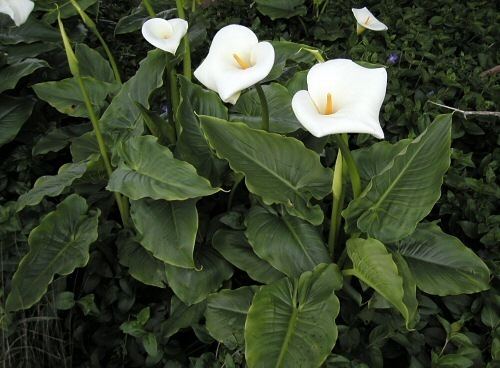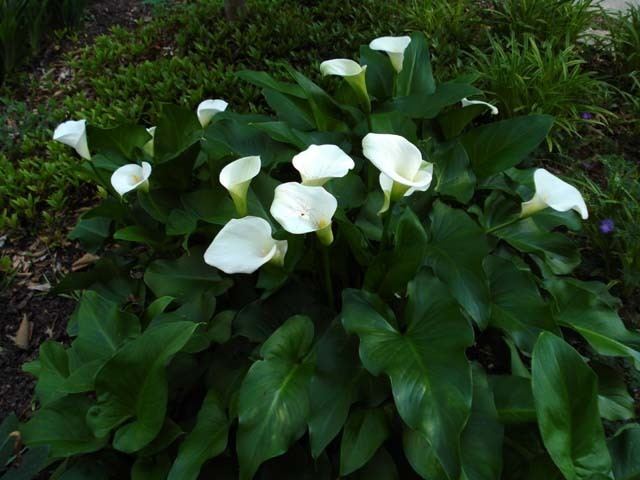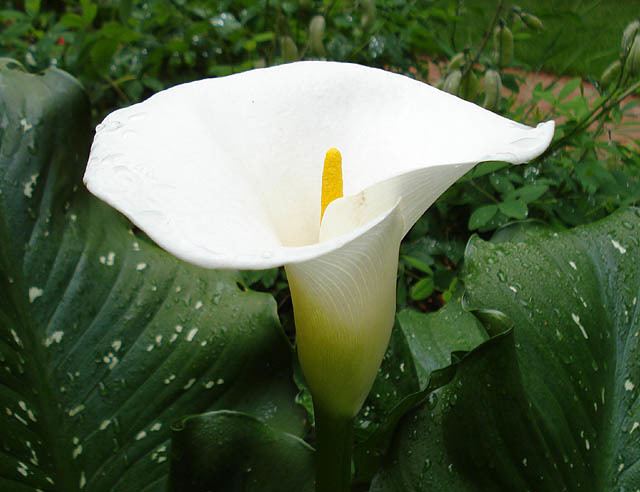Kingdom Plantae Tribe Zantedeschieae Higher classification Calla lily | Subfamily Aroideae Genus Zantedeschia Conservation status Least Concern Rank Species | |
Similar Lily, Calla lily, Hydrangea, Tulip, Peony | ||
Some calla lilly care tips giant calla lilly zantedeschia aethiopica in full bloom1080p
Zantedeschia aethiopica (known as calla lily and arum lily) is a species in the family Araceae, native to southern Africa in Lesotho, South Africa, and Swaziland.
Contents
- Some calla lilly care tips giant calla lilly zantedeschia aethiopica in full bloom1080p
- Zantedeschia aethiopica arum lily 28 jun 2014 dscf5290
- Description
- Distribution and habitat
- Cultivation
- Symbolism
- References

Zantedeschia aethiopica arum lily 28 jun 2014 dscf5290
Description

Zantedeschia aethiopica is a rhizomatous herbaceous perennial plant, evergreen where rainfall and temperatures are adequate, deciduous where there is a dry season. Its preferred habitat is in streams and ponds or on the banks. It grows to 0.6–1 m (2.0–3.3 ft) tall, with large clumps of broad, arrow shaped dark green leaves up to 45 cm (18 in) long. The inflorescences are large and are produced in spring, summer and autumn, with a pure white spathe up to 25 cm (9.8 in) and a yellow spadix up to 90 mm (3 1⁄2 in) long. The spadix produces a faint, sweet fragrance.

Z. aethiopica contains calcium oxalate, and ingestion of the raw plant may cause a severe burning sensation and swelling of lips, tongue, and throat; stomach pain and diarrhea may occur.
Distribution and habitat

Z. aethiopica is native to southern Africa, specifically Lesotho, Mozambique, South Africa, and Swaziland. It has naturalised in Kenya, Madeira, Malawi, Tanzania, Zambia, and Australia, particularly in Western Australia, where it has been classified as a toxic weed and pest. The cultivar 'Green Goddess' is listed in the New Zealand National Pest Plant Accord, which proscribes its cultivation, sale, and distribution.
Cultivation
A number of cultivars have been selected as ornamental plants:


Z. aethiopica and its cultivars 'Crowborough' and 'Green Goddess' have gained the Royal Horticultural Society's Award of Garden Merit.
In order to introduce colours to the large white calla lilies, like the many colours available in the dwarf summer calla lilies, attempts have been made to hybridise Z. aethiopica with Z. elliotiana. These have resulted in albino progeny, which are non-viable.
Symbolism
Z. aethiopica is the national flower of the island nation of Saint Helena, where it grows widely. Further, it is an important symbol of Irish republicanism and nationalism since 1926, because it is used to commemorate the dead of Easter 1916 and onward.
